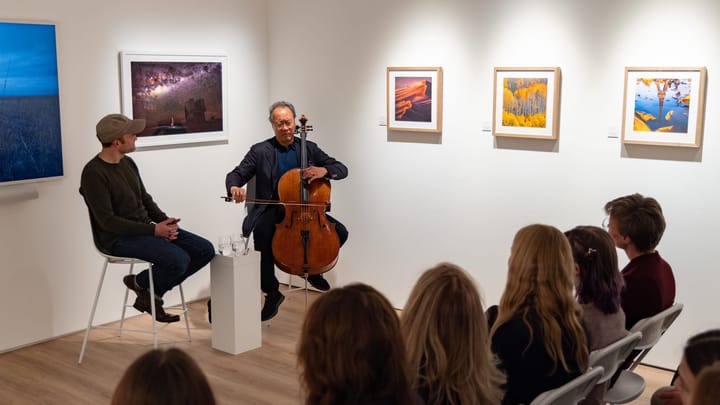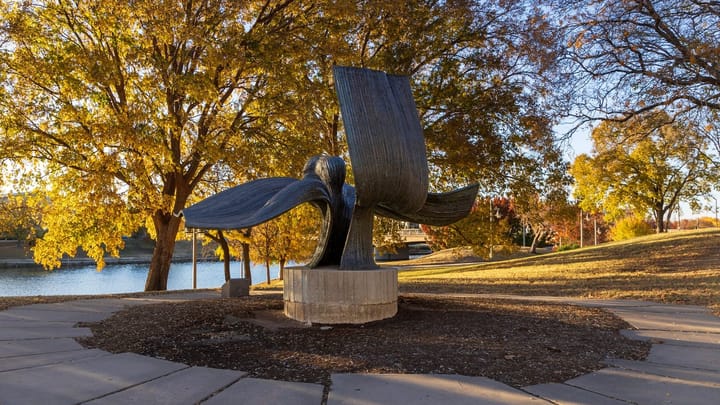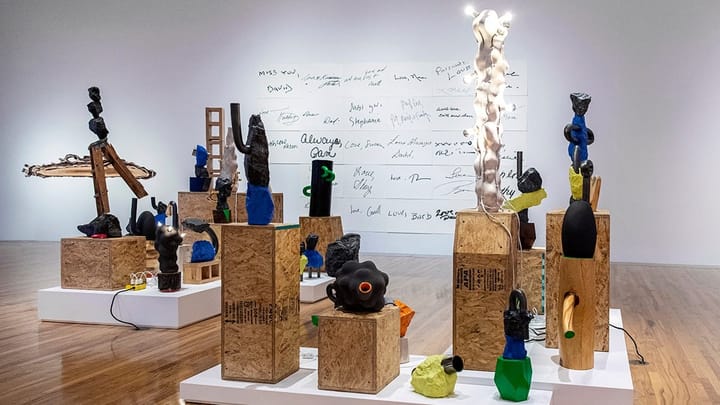Conrad Snider shapes clay into a legacy of public art
In a former feed mill in Newton, Kansas, the artist creates work that explores place and the nature of clay. New works by Snider were installed this summer at two parks in Wichita.
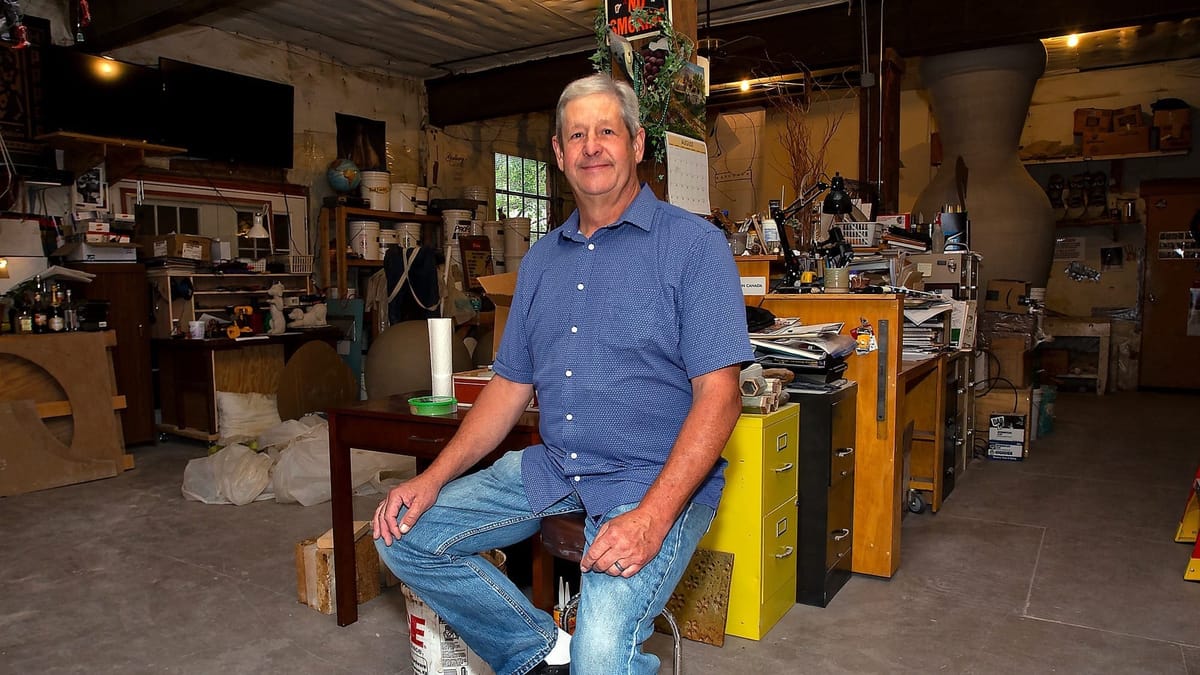
When Conrad Snider talks about clay, he talks about resistance and patience.
“You don’t force clay to do something it doesn’t want to do,” he said, during a June artist talk at Newton Public Library. “It will turn around and bite you.”
Snider has been sculpting clay for more than four decades. His work — which range from functional pieces to large-scale public art installations across Kansas and the Midwest — combines technical precision with a strong sense of place and narrative. To build his place-based pieces, such as mural walls, Snider impresses clay with objects that carry echoes of the world he’s trying to capture. Textiles, the spines of books, or bits of industrial hardware imprint memories as well as textures.
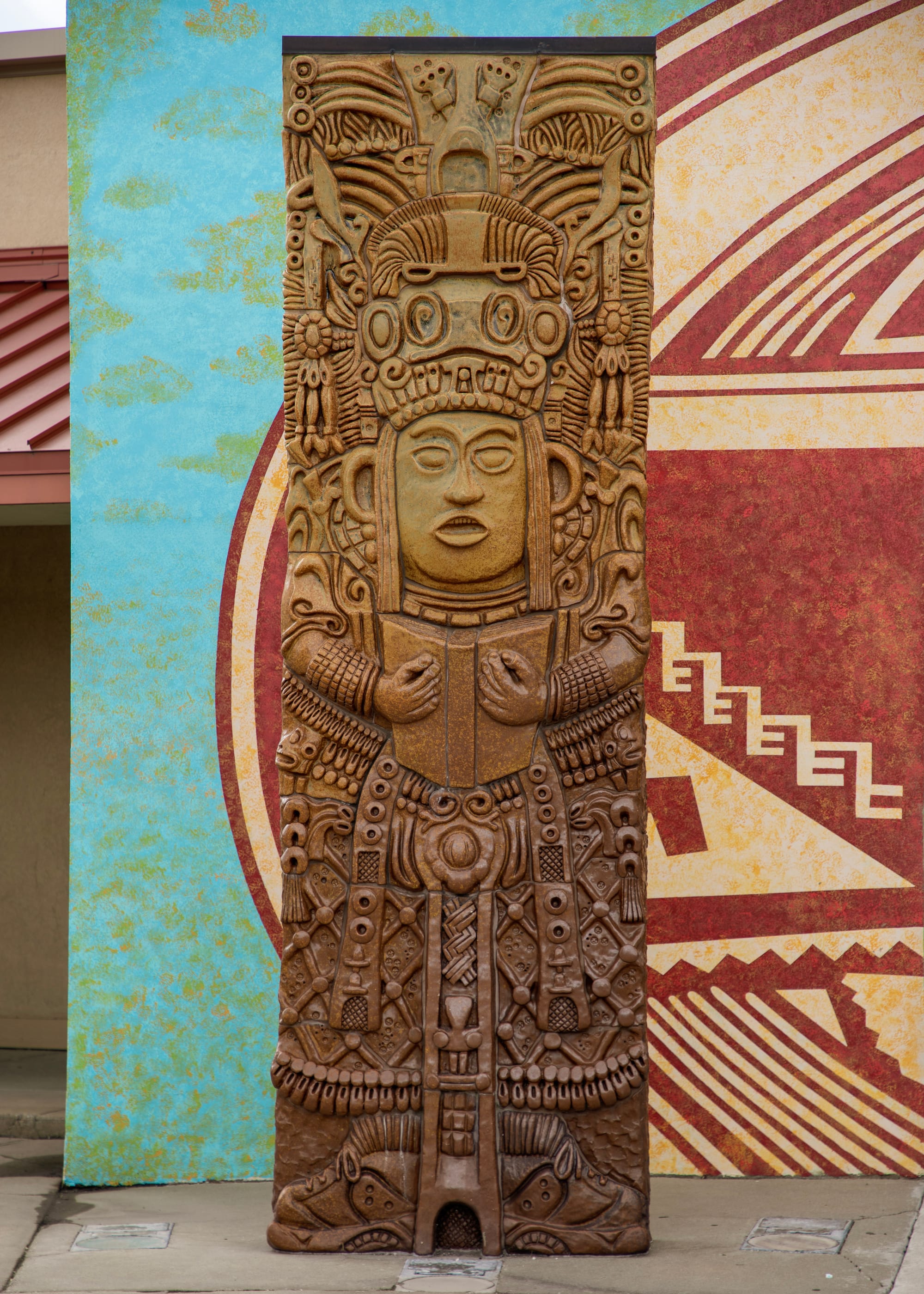
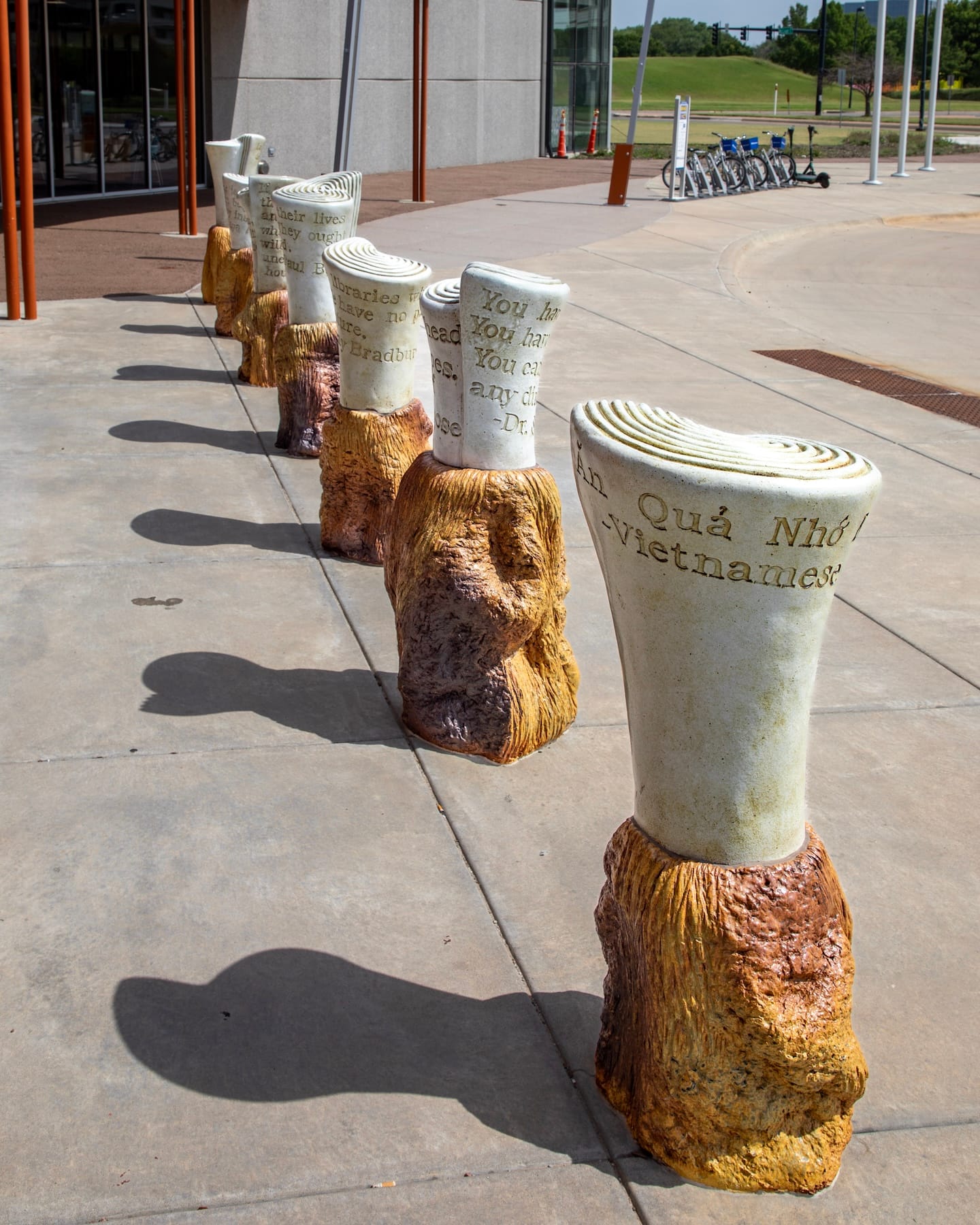
From left: One of Snider's Evergreen Library Entrance Steles and his "Concentricity" sculptures on the west side of the Advanced Learning Library. Photos courtesy of the City of Wichita.
His studio occupies a former feed mill beside a railyard in Newton, a space he bought in 1985. At the time, he was 23 and unsure how a young ceramicist could make a living. “It was inexpensive enough that I could afford to leave for six months or a year and still have it to come back to,” he said.
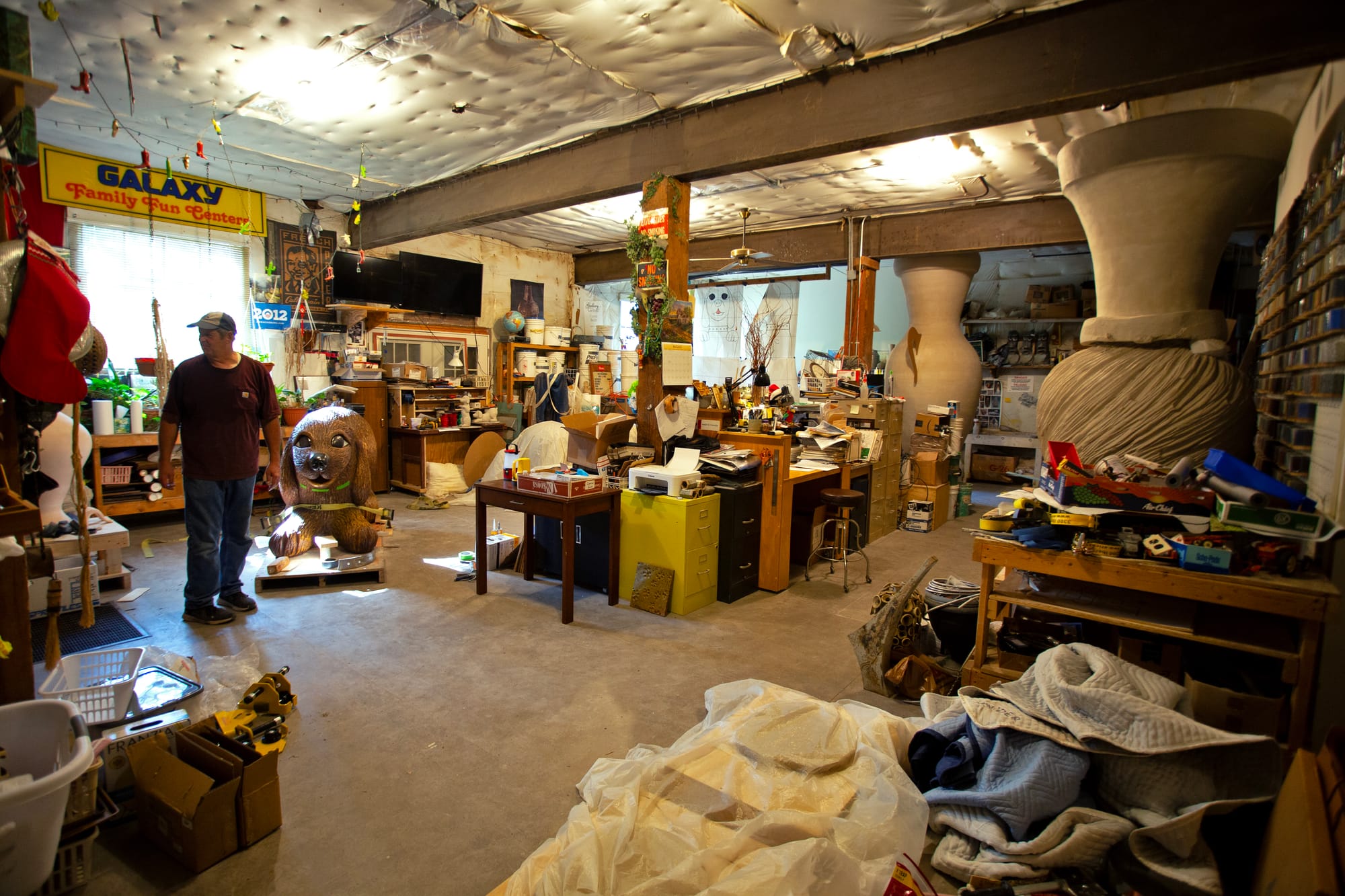
Inside, the space reflects the demands of his work: a massive potter’s wheel capable of turning vessels that tower overhead; two large, custom-built kilns; and shelves and floor space occupied by dozens of pieces in various stages of completion.
His large standing kiln took him a year to design and build, as he tweaked burner angles and repositioned blowers in an effort to get consistent temperatures across its great height. “Now, it fires evenly within 0.7 degrees from top to bottom,” he said.
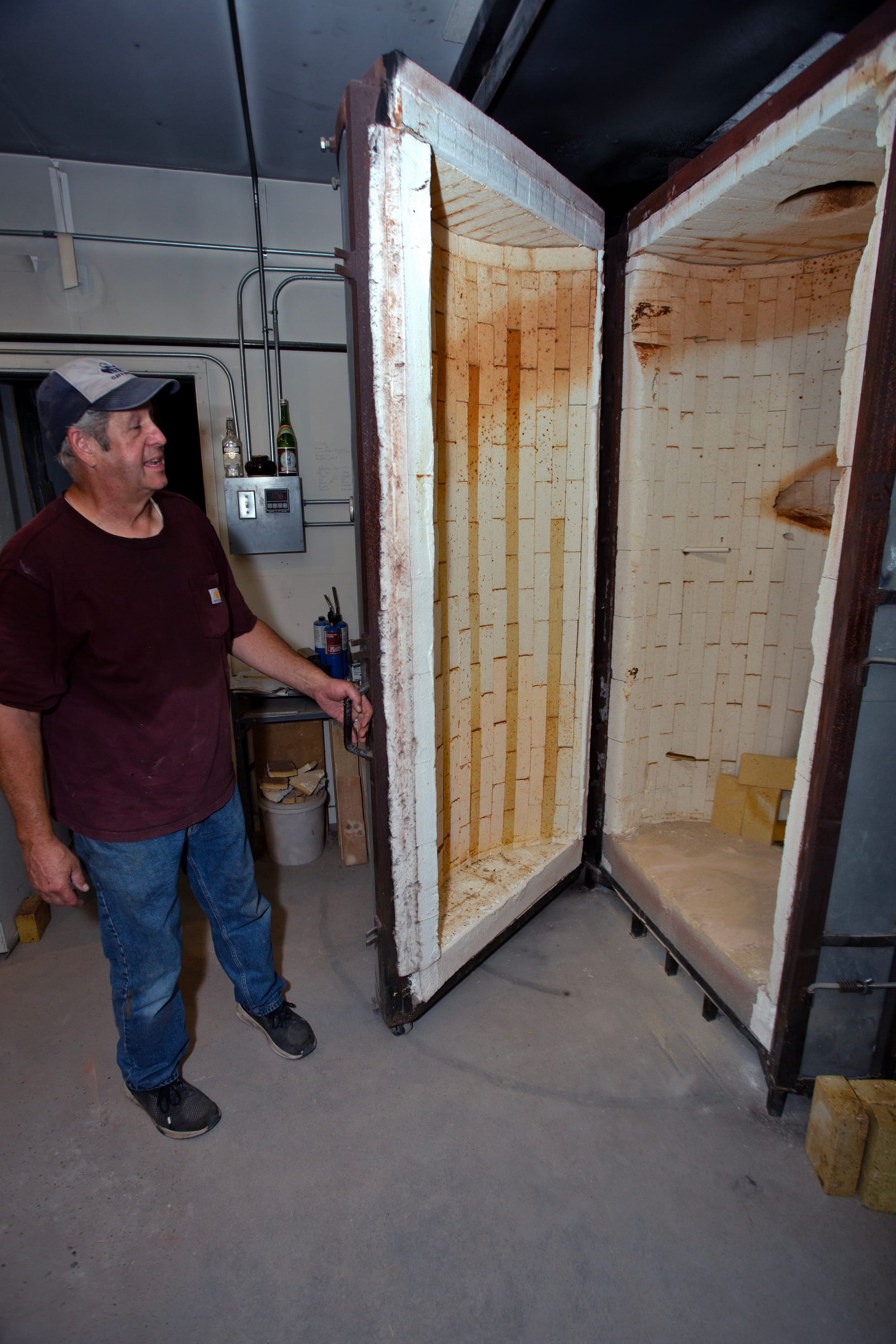
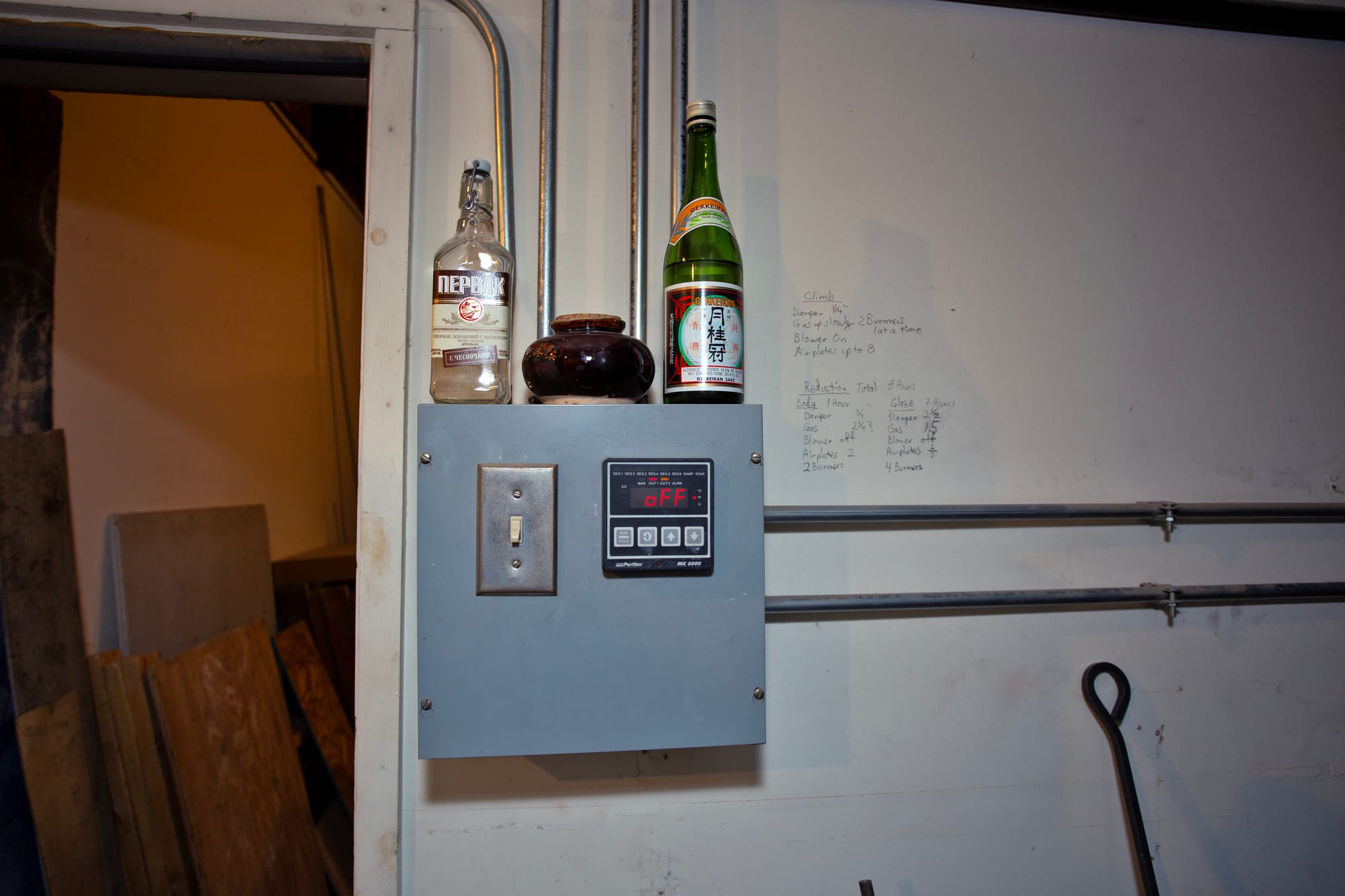
Snider performs a small ritual before every big firing. After loading the kiln and closing its door, he makes a small pile of salt and pours two circles around it: one of Russian vodka and one of sake. It’s not a superstition, exactly, but a habit that he “picked up,” he said, as a way of marking the gravity of committing months of work to the fire. Photos by Jason Crile for The SHOUT.
Inside the kilns, temperatures in excess of 2,300 degrees Fahrenheit are sustained during firings that can go on for days or weeks. Until a year ago, a computer controlled the temperature, which rises slowly over the length of a firing. After that system stopped working, Snider went back to controlling the temperature “by feel,” making manual adjustments before leaving for the evening and again upon his return the next morning, and monitoring his kilns from home using webcams.
That patience and rigor, Snider said, was something he absorbed working under Jun Kaneko, the Japanese-born, Omaha-based artist known for monumental ceramic forms. As Kaneko’s assistant, he helped create towering dangos — 12-foot-tall, egg-shaped forms weighing several tons, demanding weeks of constant firing and relentless care.
Our free email newsletter is like having a friend who always knows what's happening
Get the scoop on Wichita’s arts & culture scene: events, news, artist opportunities, and more. Free, weekly & worth your while.
No spam. Unsubscribe anytime.
The experience with large-scale ceramics helped prepare Snider for the public work that has defined much of his career.
Snider’s most recent public sculptures were unveiled on August 26 at Country Acres Dog Park in west Wichita: a pair of larger-than-life cartoon dogs. One sculpture crouches in a play stance, ready to pounce; another stands upright on its hind legs, as if begging. Around them are oversized ceramic balls, and tiles impressed with paw prints, including those of Snider’s late dog, Harry.
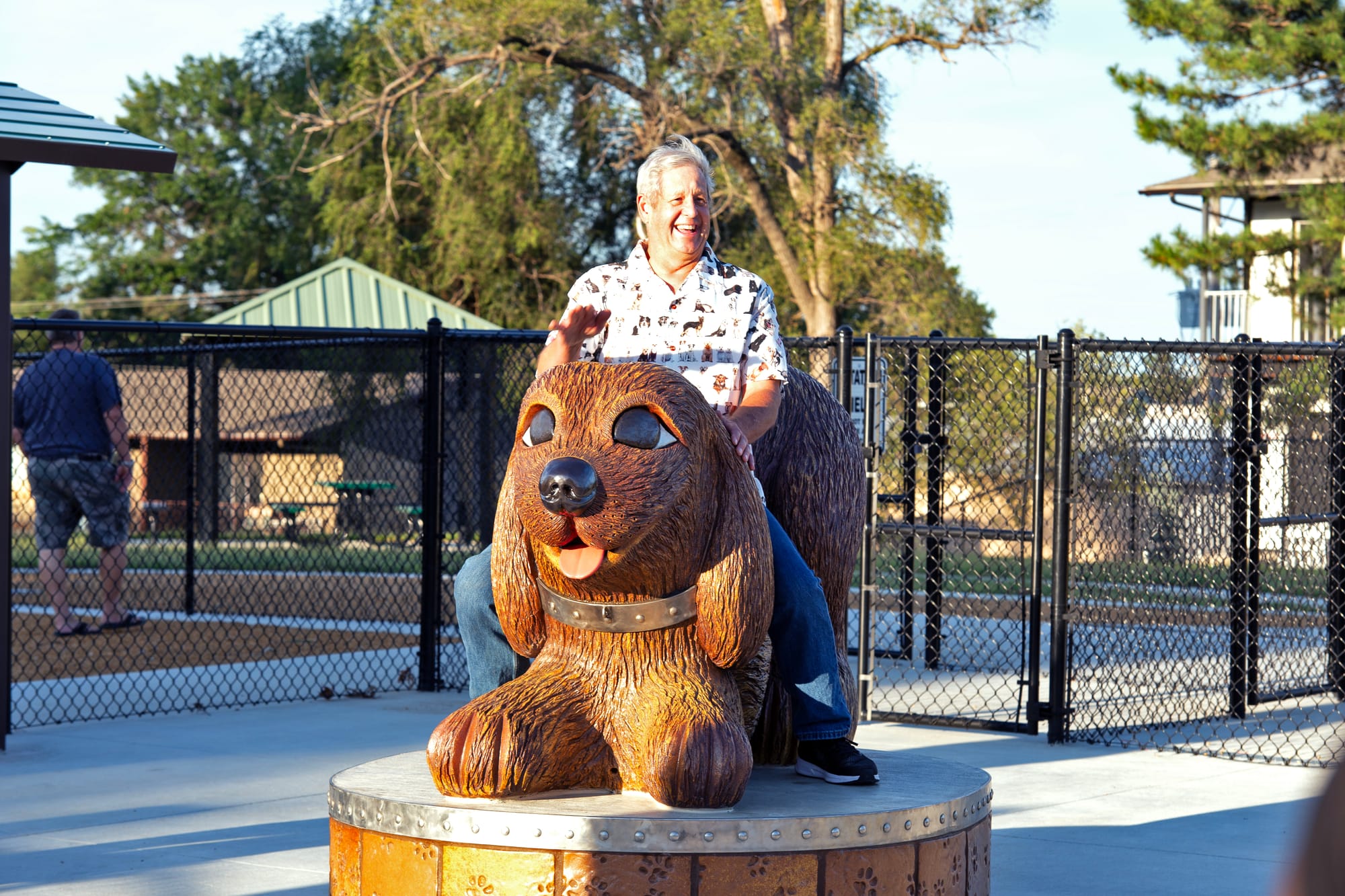
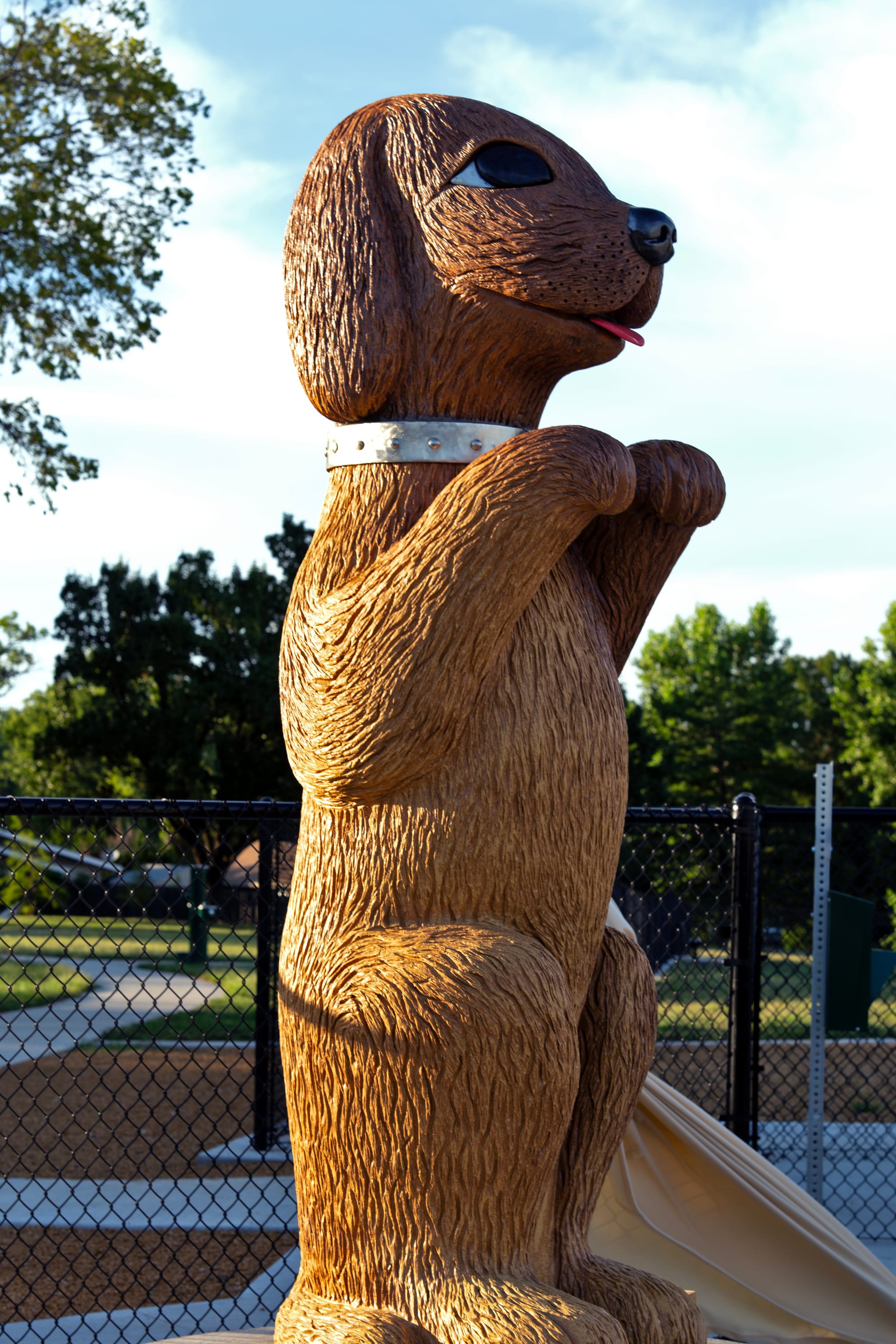
“I spent a lot of time trying to make sure the faces were happy, sort of excited to see you,” Snider said. At the unveiling, Snider straddled the back of the pouncing dog, a move that will surely be echoed by countless children in the years to come.

If the dogs invite delight and play, “Woven,” installed in 2004 at the Salina Municipal Building, meets a more solemn civic setting. The building houses the sheriff’s office, courts, and jail. “People aren’t there for very happy reasons,” Snider noted. His response was to create “benevolent presences” — abstracted, 6-foot-tall human forms that project calm rather than judgment. Woven patterns — a metaphor for the fabric of society — run from the outdoor approach into the interior spaces where trials and judgments happen.
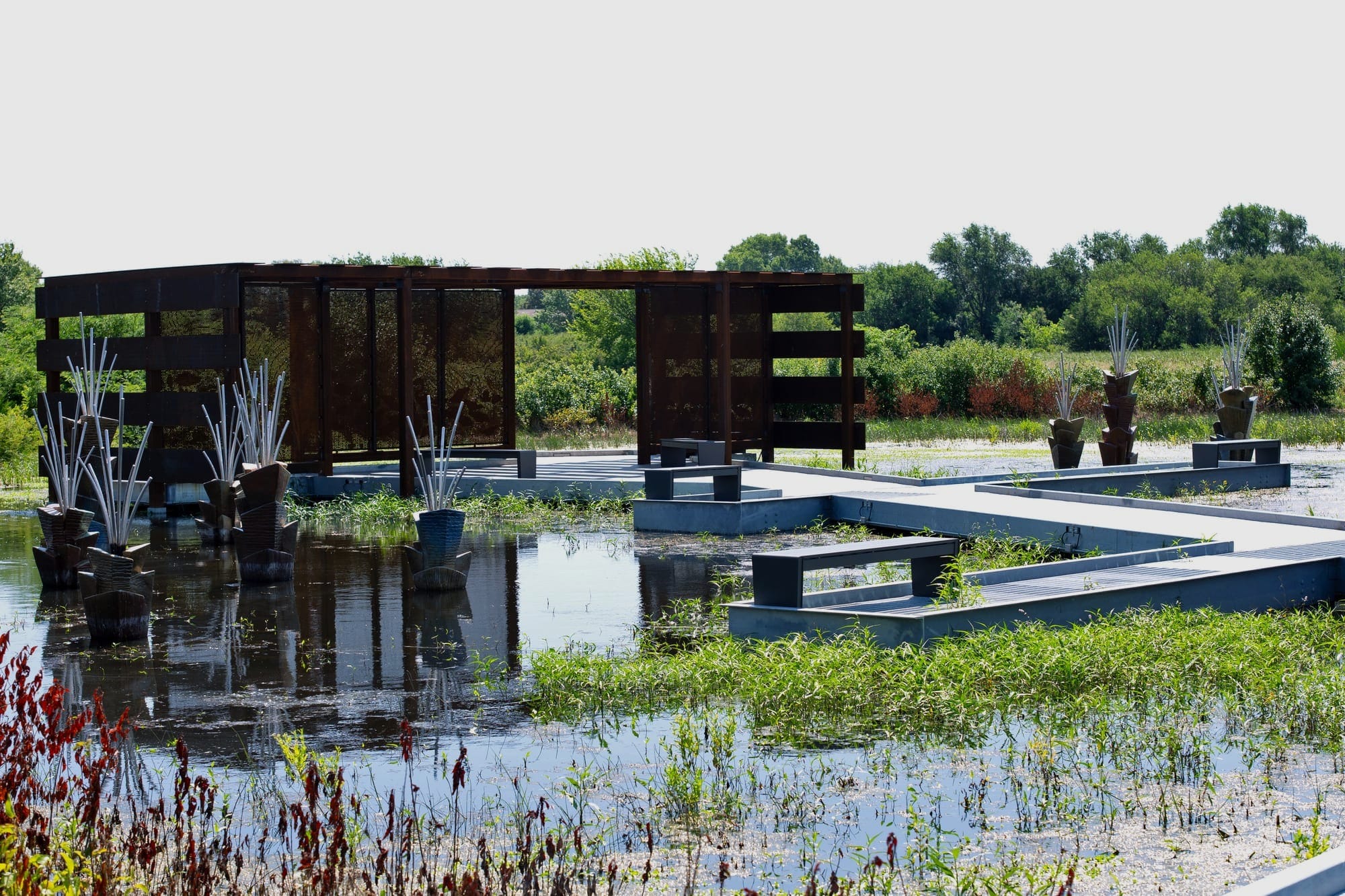
Another recent public art installation, unveiled in June, took Snider to Wichita’s Pracht Wetlands Park, where he created reed-like ceramic-and-steel sculptures that cluster near a raised walkway through the 40-acre preserve. Each piece is built on a triangular motif, with rusted corten steel and earthy ceramic surfaces designed to reflect sunset, sky, and season.
“I was thinking about a duck swimming through the water, and how you see that triangular wake, and how the shapes overlap,” Snider said. “I was picking up on that triangle, and the horizontal ripples of the water against the vertical of the grass.”

With his latest public commissions complete, Snider is eager to explore more personal work — especially his figurative sculptures, which he describes as less about site or utility and more about the qualities of clay itself: its mass, and its capacity to tear, rip, and hold. One example is “Insomnia,” a pair of life-sized figures that evoke a single entity torn violently apart. The head of one figure resembles wood that has been chopped with an ax, while the head of the other is dominated by a more flesh-like wound.
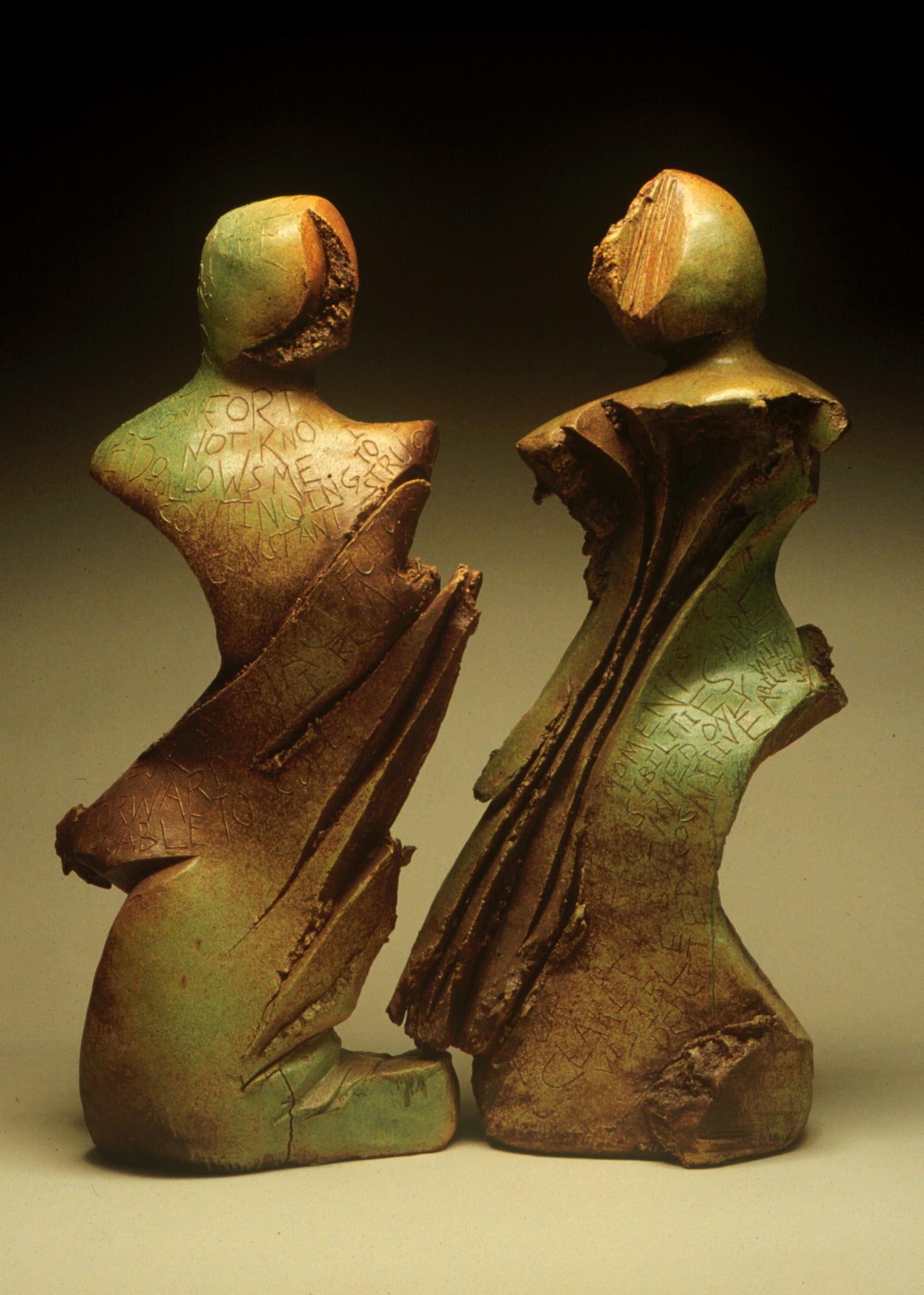
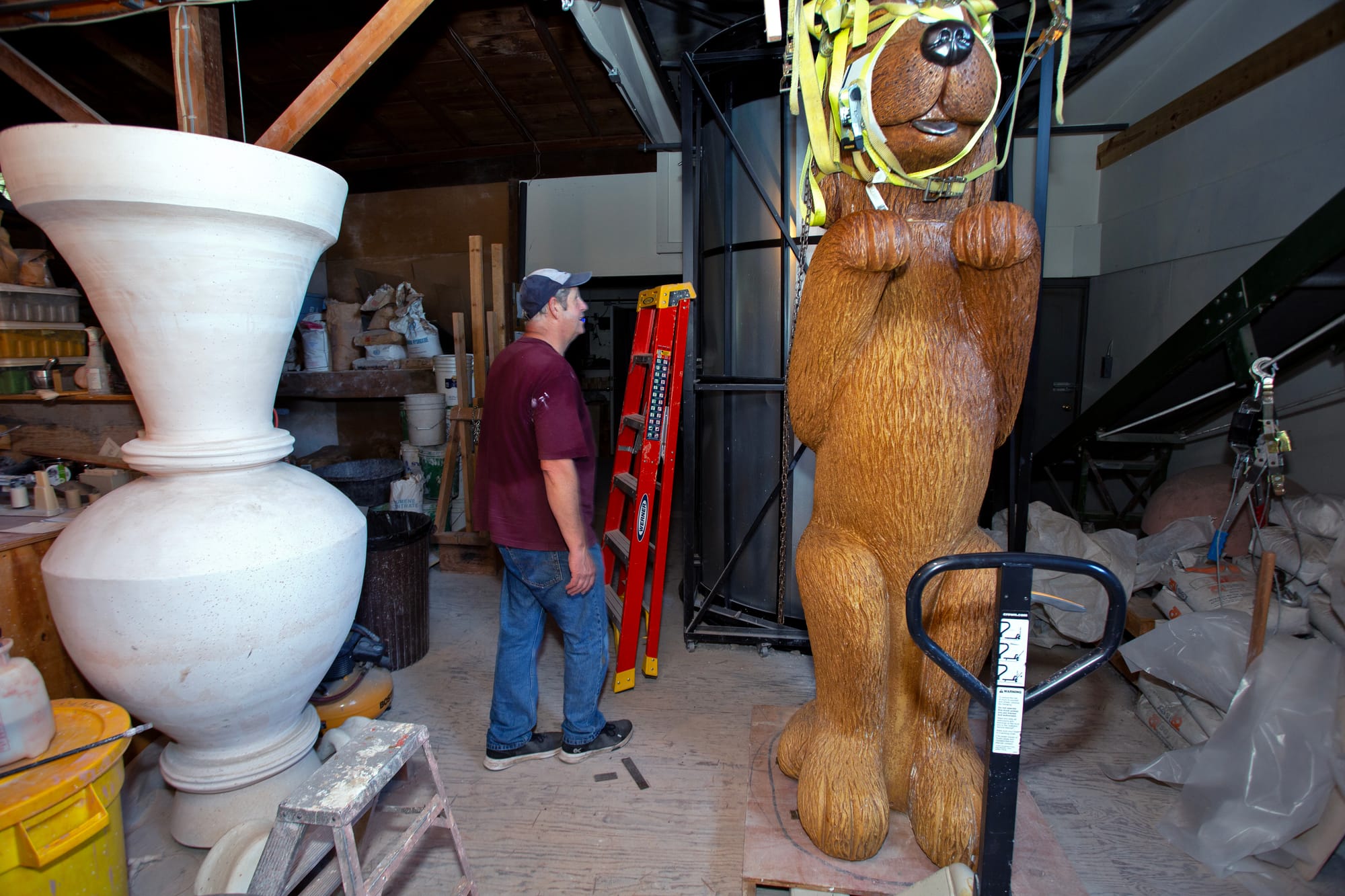
Snider is clear-eyed about how this body of work sits in the larger art world. “Galleries want things that are recognizably from a certain artist,” he explained during his Newton talk. “That kind of signature style can be a little limiting on how you can change and what you can do.” It’s a mode of career-building he has consciously avoided.
Instead, his practice is responsive — to clients, to the context of a site, and to his own shifting curiosity. “I really like the freedom of working in whatever direction I feel like,” he said.
“That’s what keeps the work interesting.”
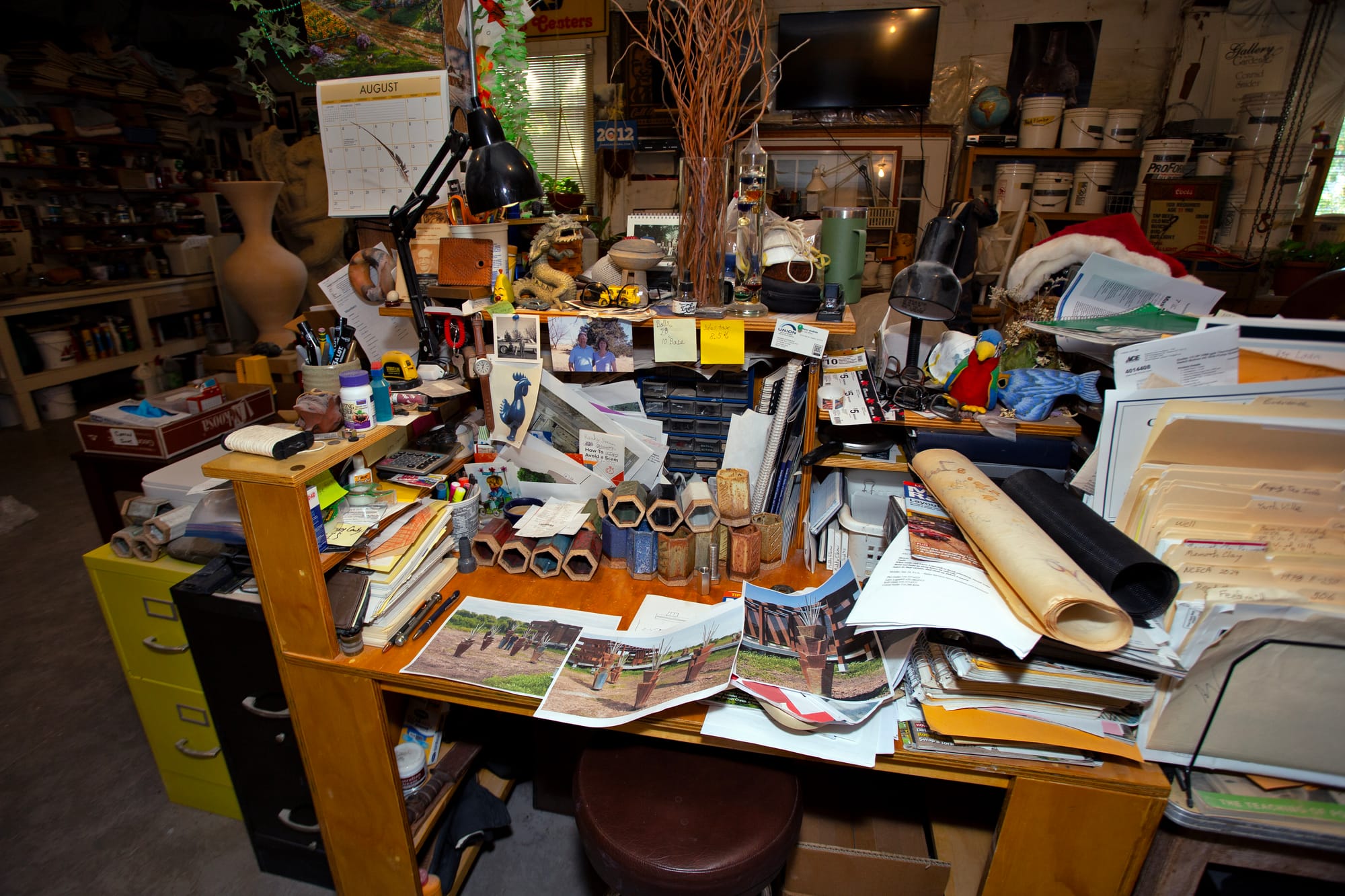
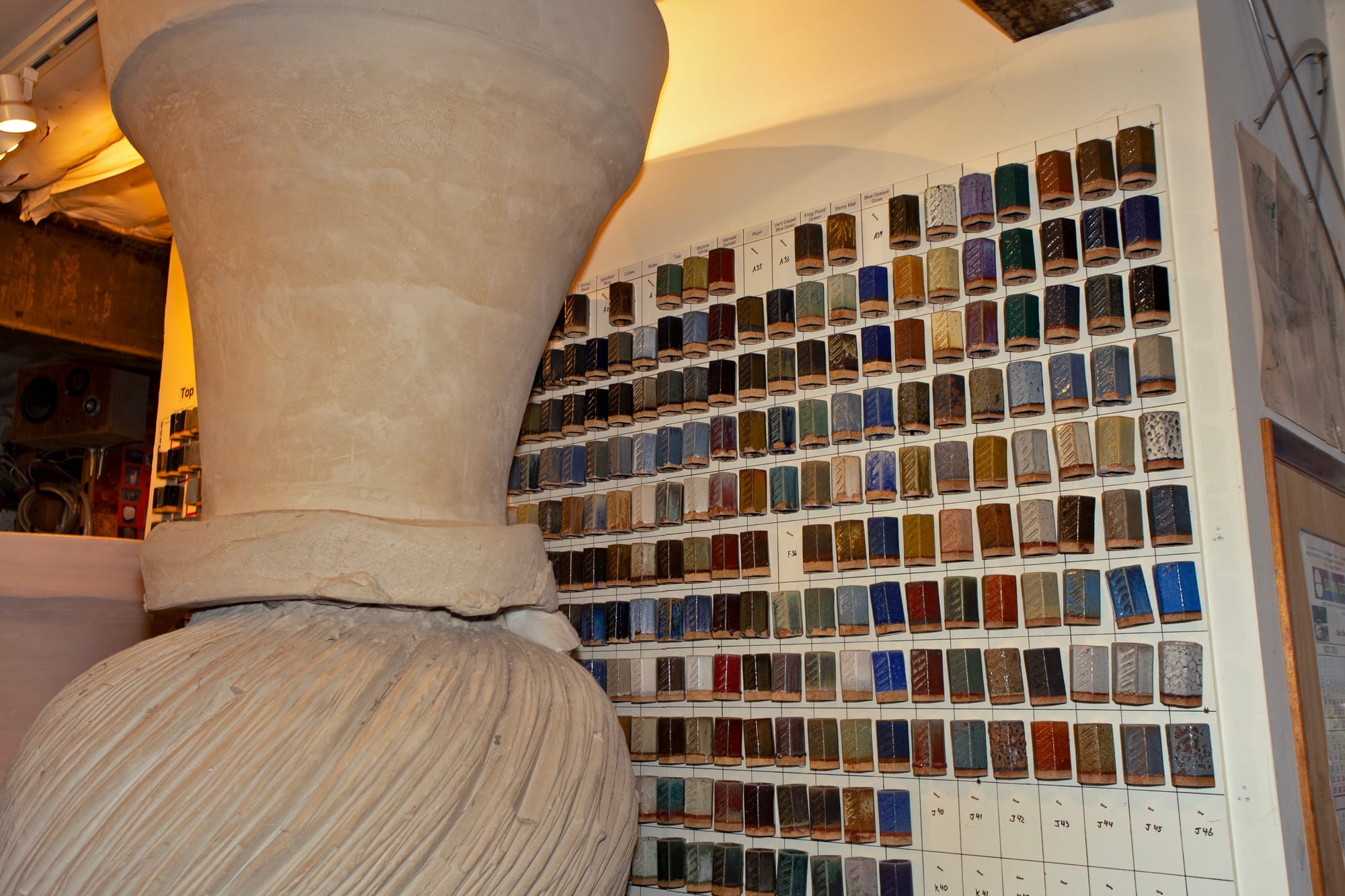
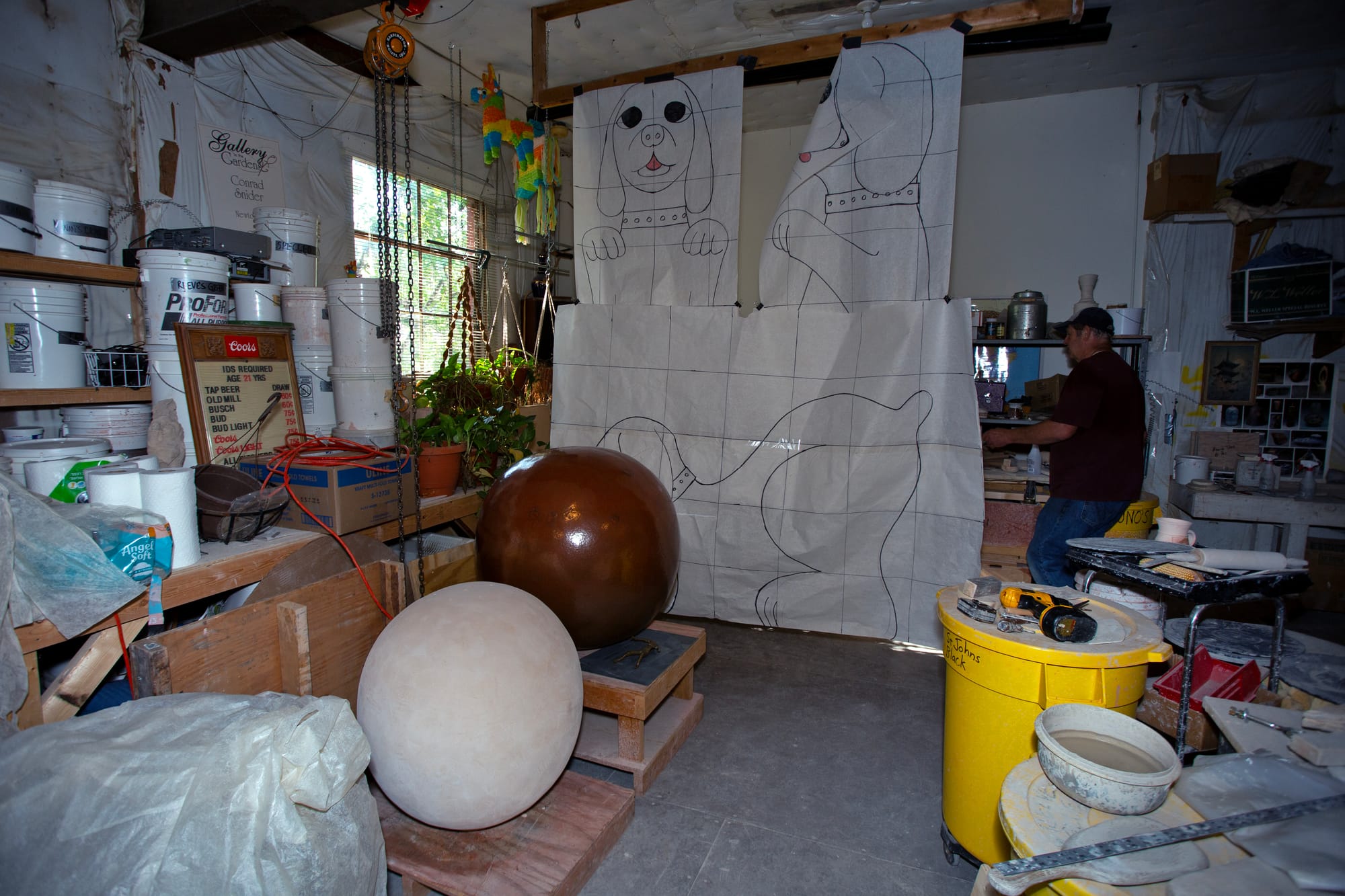
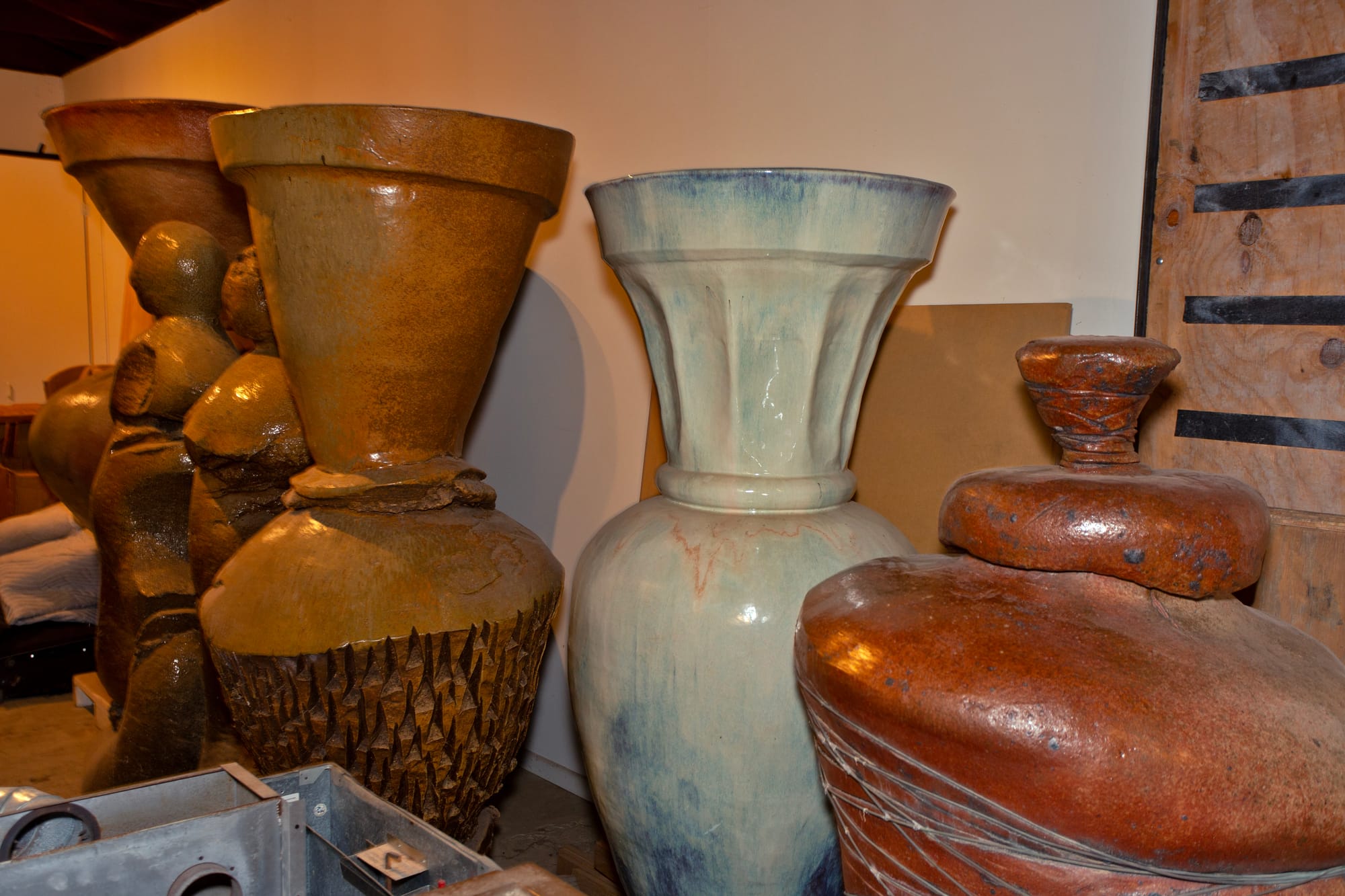

More views from Snider's studio in Newton, Kansas. Photos by Jason Crile for The SHOUT.
Sam Jack is a poet, a classical tenor, and the adult services librarian at Newton Public Library. He performs with several local groups, including Wichita Chamber Chorale, Wichita Grand Opera, and Opera Kansas. He received a Master of Fine Arts in creative writing from the University of Montana.
❋ Derby man has the kind of voice that turns heads — and chairs
❋ Socializing while sober: how some Wichitans are cultivating alcohol-free communities
❋ As a small creative business closes, the owner mourns
❋ Painting through it: Autumn Noire on 20 years of making art
❋ How a guy from Wichita resurrected 'Dawn of the Dead'
❋ Bygone Friends University museum housed curious collections
Support Kansas arts writing
The SHOUT is a Wichita-based independent newsroom focused on artists living and working in Kansas. We're partly supported by the generosity of our readers, and every dollar we receive goes directly into the pocket of a contributing writer, editor, or photographer. Click here to support our work with a tax-deductible donation.

